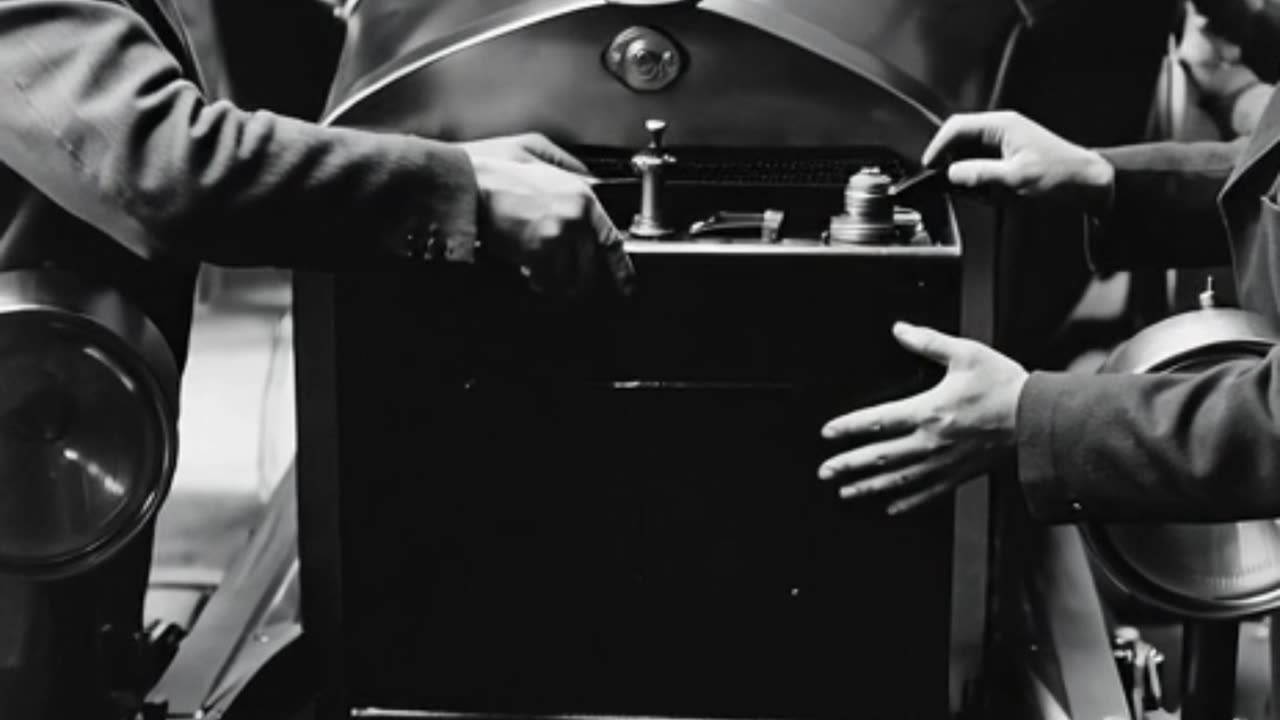Premium Only Content

The Crate That Built the Floor: Henry Ford's Ingenious Reuse #shortstory #fordhistory #dadstories
The Crate That Built the Floor: Henry Ford's Ingenious Reuse
In the bustling heart of Detroit's industrial dawn, the year was 1919. The Ford Motor Company had revolutionized the world with the Model T, the "Tin Lizzie" that put America on wheels. But Henry Ford, ever the relentless tinkerer, was never satisfied. The Model T's magneto ignition had served well for over a decade, but complaints from drivers—especially women in skirts struggling with hand-cranking—pushed him to introduce an electric starter. This meant batteries, and batteries meant shipping crates. Ford, whose mantra was "eliminate, then simplify," saw an opportunity in the waste.
At the Highland Park assembly plant, where the moving line hummed like a mechanical heartbeat, Ford gathered his engineers in a dimly lit drafting room cluttered with blueprints and half-eaten sandwiches. "Gentlemen," he declared, his voice gravelly from years of chain-smoking and plain talk, "we're not just building cars. We're building efficiency. Every scrap, every splinter counts." The challenge: the driver's side floorboards, those simple oak planks that protected feet from the elements and the transmission tunnel below, were eating into production time and lumber costs. Fresh-cut boards from Michigan's vanishing forests were pricey, and sawdust piled up like snowdrifts.
Ford's solution was as audacious as it was practical. He summoned the representative from the Electric Storage Battery Company, the supplier for the new 6-volt units. "Your crates," Ford said, sketching rough dimensions on a scrap of newsprint, "build them to these specs: 3/4-inch oak slats, reinforced at the corners with galvanized nails, and drill these vent holes—here, here, and here—for drainage and fit." The rep blinked. "Mr. Ford, that's not standard." Ford leaned in, eyes like rivets. "Make it standard, or find another customer. When that battery hits the line, your box becomes part of the car."
Word spread through the factory like steam from a boiler. Suppliers grumbled but complied; Ford's orders were gospel, backed by the promise of millions in volume. The first shipment arrived by rail from Philadelphia, crates stamped with warnings of "Fragile: Acid Contents" stacked like cordwood on the loading dock. Workers in oil-stained overalls and flat caps pried them open under the glare of arc lamps, revealing rows of gleaming lead-acid batteries nestled in sawdust.
On the assembly floor, the moment unfolded like a well-rehearsed vaudeville act. A 1919 Model T Touring chassis rolled down the line, its black fenders fresh from the paint booth, engine purring softly on its test stand. The battery crew—three men with callused hands and sweat-banded foreheads—hoisted the unit into place beneath the driver's floor, securing it with U-bolts to the frame. The empty crate lay discarded nearby, its slats splayed like a felled tree.
Ford himself strode up, sleeves rolled to his elbows, parting the crowd of foremen and line workers like Moses at the Red Sea. He knelt, silent as a judge, and began disassembling the remnants: prying nails with a claw hammer, aligning the boards edge to edge. One by one, they clicked into place over the battery compartment—left slat for the clutch pedal cutout, center for the brake, right with its vent hole perfectly framing the starter switch. The dimensions were exact: 18 inches wide by 36 long, beveled just so to hug the transmission hump. With the same nails from the crate, he fastened them down, tapping the last one home with a mallet.
The line paused; even the conveyor chains seemed to hold their breath. "There," Ford said, standing back, wiping sawdust from his trousers. "Battery in, floorboards on. No waste, no wait. That's how we build a million cars." The workers erupted in cheers, half awe, half disbelief. From that day, every battery crate fed the floorboards for its destined Model T—driver's side only, as the passenger's mirrored it from fresh stock for symmetry. It saved Ford thousands in lumber and hours in milling, a quiet triumph in his war on inefficiency.
Of course, not every tale from the Ford empire is etched in stone; whispers in later years suggested the practice was more legend than ledger entry, with some crates repurposed for outgoing shipments instead. But the anecdote endures, a testament to Ford's genius for turning trash into treasure. By 1927, when the Model A replaced the T, he refined the trick further, making the entire battery box a drop-in floor kit—holes for controls and all. Yet it was the Model T era that birthed the myth, fueling the fire of American ingenuity one reclaimed board at a time.
-
 0:10
0:10
Dad Jokes and Family Comedy
22 hours agoDad Joke Alert: Miss Right's Sneaky First Name! 😂 @DadFunnies
231 -
 LIVE
LIVE
The Quartering
25 minutes agoEpstein Files Takes Its First Scalp, MTG Unleashes, Kash Patel Blasted, Internet Outage & More
754 watching -
 LIVE
LIVE
Dr Disrespect
3 hours ago🔴LIVE - DR DISRESPECT - ARC RAIDERS - NO MERCY TO MAX LEVEL
1,593 watching -
 LIVE
LIVE
Side Scrollers Podcast
3 hours agoStreamer Awards WRECKED + Cloudfare OUTAGE + AI LOVED ONES?! + More | Side Scrollers
862 watching -
 1:57:30
1:57:30
Steven Crowder
4 hours agoSteven Crowder is a Deep State Agent
429K331 -
 LIVE
LIVE
Sean Unpaved
2 hours agoJames Franklin Is Going To REVIVE Virginia Tech! | UNPAVED
116 watching -
 LIVE
LIVE
Viss
4 hours ago🔴LIVE - Completing Quests & Annihilating All in Our Path! - Arc Raiders!
85 watching -
 53:51
53:51
The Rubin Report
3 hours agoBill Maher Obliterates Patton Oswalt’s Liberal Bubble in Only 2 Minutes
37.5K42 -
 LIVE
LIVE
LumpyPotatoX2
3 hours agoWhere Winds Meet: Just Petting Kitties - Made in China
55 watching -
 LIVE
LIVE
ReAnimateHer
18 hours ago $0.12 earnedTwisted Tales & True Crime - Inbred Byrd Sisters & Graysone Homestead
94 watching